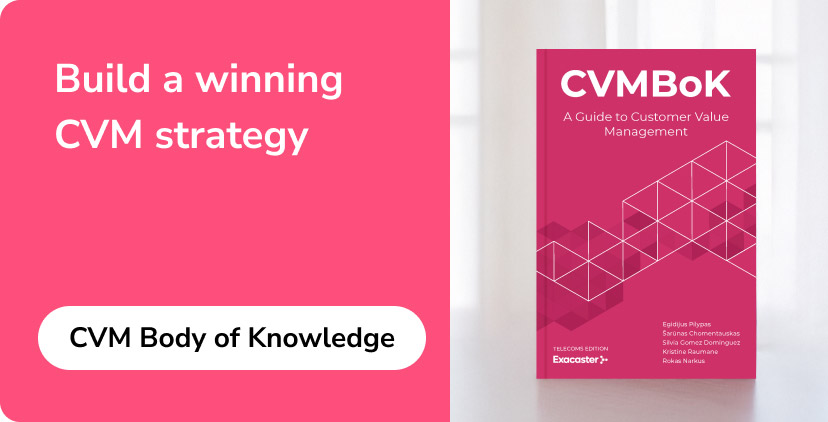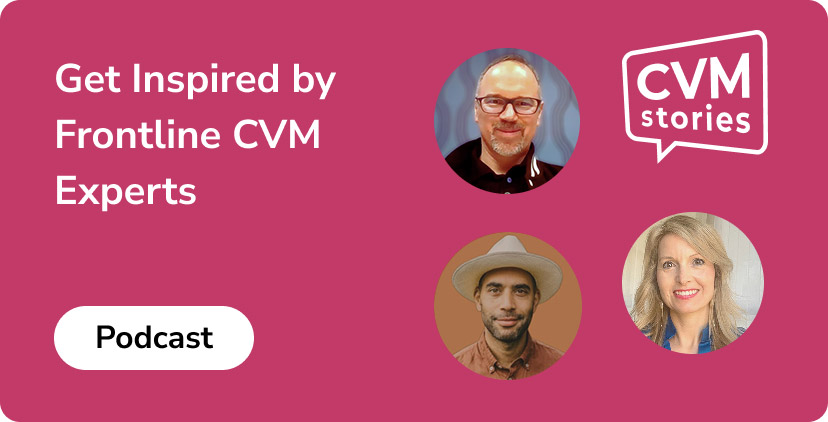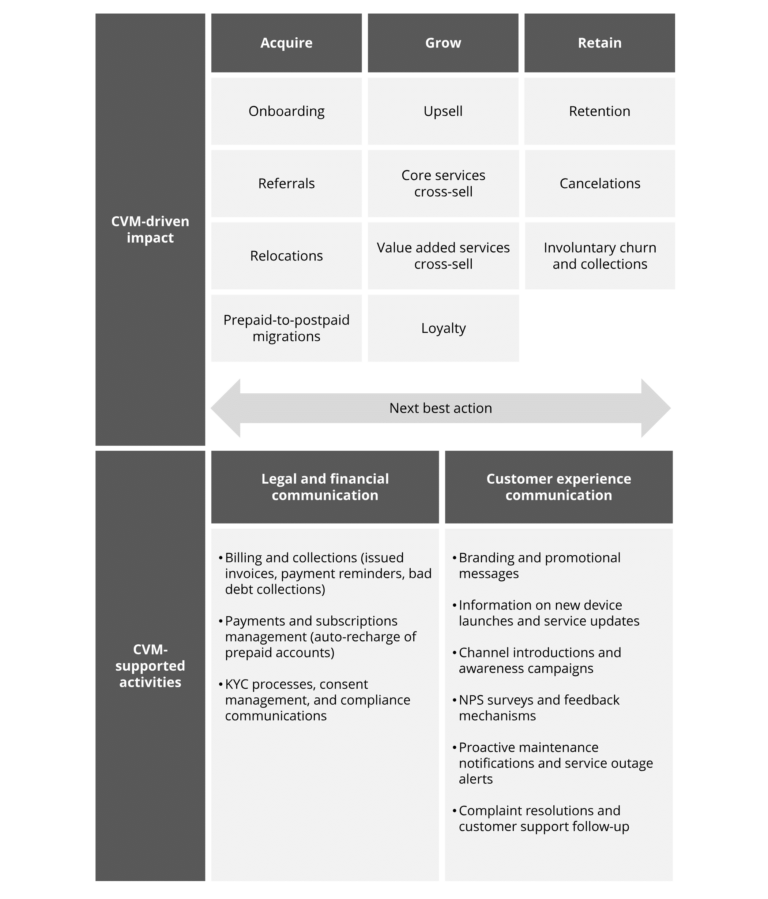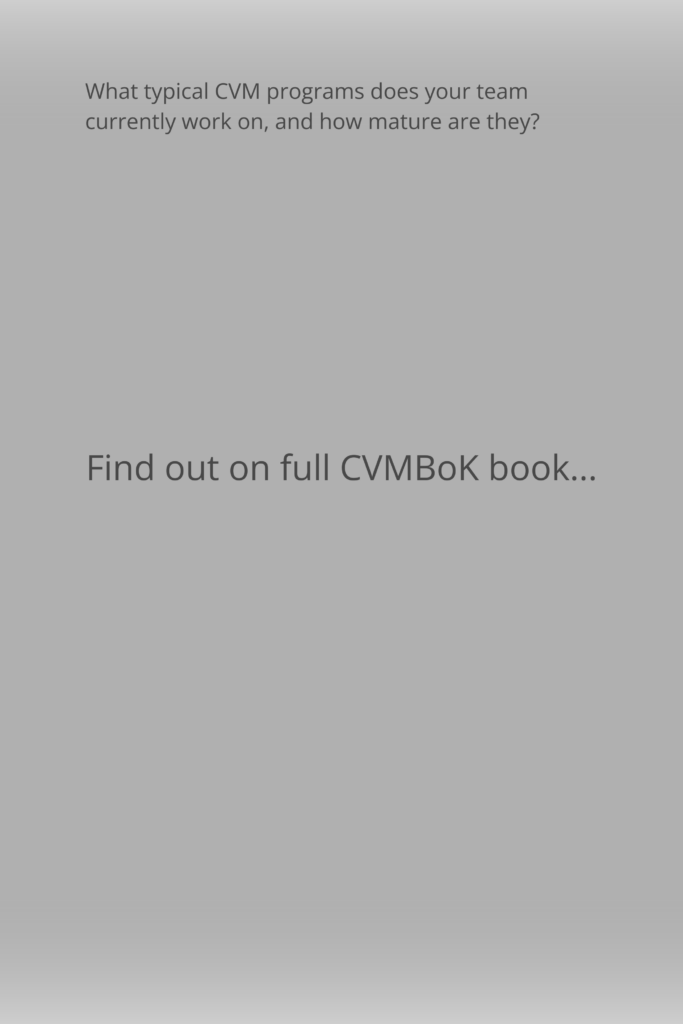The Work of Customer Value Management Professionals
Acting in the customer’s best interest and creating value can often feel like an overwhelming challenge, given the myriads of opportunities and the noise that comes with them. To navigate this complexity, CVM professionals need a structured approach that aligns their efforts with strategic goals and maximizes impact.
This chapter introduces the CVM Portfolio concept, which helps to identify CVM programs and initiatives based on three fundamental pillars—acquire, grow, and retain. Additionally, we introduce the CVM Canvas idea, which helps structure the main components of each initiative and serves as a blueprint for implementation.
The Customer Value Management Portfolio
The CVM Portfolio offers a high-level framework that enables CVM professionals to concentrate on activities that deliver maximum value (see Figure 3.1). To optimize their effectiveness, CVM professionals must distinguish between two categories of activities:
1. CVM-driven impact: Initiatives led and managed directly by the CVM function
2. CVM-supported activities: Organization initiatives led by other departments, where CVM contributes
Understanding this distinction is crucial. By focusing on CVM-driven impact, CVM professionals can allocate resources to areas where they have the most control and can directly influence outcomes. This focus ensures that efforts are not scattered, and that strategic objectives are met efficiently. Meanwhile, recognizing CVM-supported activities allows CVM professionals to collaborate effectively with other departments, contributing to their objectives without losing sight of their primary responsibilities.
CVM-driven impact centers around three fundamental pillars:
- Acquire: This is about adding new customers to your base by facilitating a seamless onboarding process for new customers or targeting former customers who have switched to competitors. For example, when a customer purchases a prepaid SIM card, CVM professionals can ensure that they receive immediate activation support, welcome messages, and guidance on initial top-ups. Programs under this pillar include customer onboarding, prepaid-to-postpaid (Pre2Post) migration, relocation support, referral programs, and win-back campaigns.
- Grow: This is about creating more value for your customers. A practical example is offering a postpaid customer an exclusive data bundle upgrade based on their increased data usage. Initiatives here encompass upsell and core services cross-sell campaigns, loyalty programs, and promoting value-added services (VAS) like international roaming packages or device insurance.
- Retain: This is about proactively preventing churn by addressing customer needs before issues escalate. For example, if data analytics indicate that a customer is experiencing frequent dropped calls, CVM professionals can reach out with solutions or compensatory offers. Programs include proactive retention strategies, cancellation management, involuntary churn prevention, and timely intervention with save offers when customers express a desire to cancel.
Simultaneously, CVM-supported activities involve collaborating with other departments on initiatives that affect the CX:
- Legal and financial communications: Work with finance teams to ensure that billing statements are clear and that payment reminders are customer-friendly. For example, you might simplify invoice layouts to reduce customer confusion and calls to customer service.
- CX communications: Partner with product management, marketing, and customer service teams to enhance product updates, branding messages, and feedback mechanisms. An illustration is contributing to the development of an NPS survey that accurately captures customer sentiments and provides actionable insights.
Figure 3.1: The CVM Portfolio
By clearly separating CVM-driven and CVM-supported activities, CVM professionals can prioritize their efforts effectively. This distinction prevents resource dilution and ensures that CVM professionals have a significant impact on customer engagement, satisfaction, and loyalty. It allows them to lead initiatives where they can drive results while also providing valuable support to organization-wide projects without overextending their capacity.
According to Silvia Gomez Dominguez, Senior Director, Customer Solutions,

A CVM Portfolio approach empowers CVM teams to channel their energy into impactful actions rather than getting caught up in complexity. The clarity provided by a structured approach drives effectiveness, customer satisfaction, and ultimately, business value
The importance of focusing the CVM team on the most impactful programs is supported by findings from the CVM Trends 2025 research. Approximately half of telecom companies report having well-established onboarding, upselling, cross-selling, retention, and cancellation management programs. These areas reflect a strong focus on securing revenue early in the customer journey and retaining existing customers. However, fewer than a quarter of telecom companies report high maturity in more customer-centric initiatives like loyalty, relocations, or prepaid-to-postpaid migrations. This gap highlights opportunities for CVM professionals to expand their influence and drive long-term growth (See Figure 3.2).
In the upcoming sections, we’ll explore these fundamental pillars—acquire, grow, and retain—in depth, along with key programs that can help telecoms and their leaders succeed.
Figure 3.2: CVM Programs Maturity
Previous: The Transformation from a Product-centric to a Customer-centric Approach







